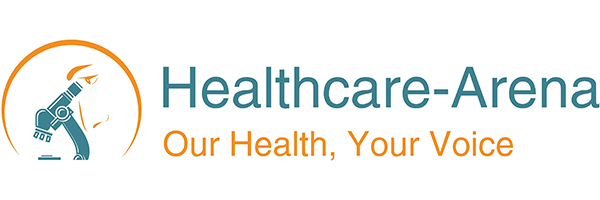Music as medicine
Share this article:
Why does music have an effect on our perception of pain and help us to overcome the functional restrictions imposed by pain?
We recently described 4 Reasons to have Music in your Operating Theatre a meta analysis showing that music can help to reduce the pain of surgical procedure and post-operation recovery. The reasons for music’s effect on pain are still unclear but certainly extend beyond Evan O’Neill Kane’s explanation that the music “fills the ears of the perturbed patient with agreeable sounds” [1].
Possible explanations for music’s effects on pain perception include:
- Music ‘relaxes’ us and/or provides motivation
- Music distracts us from the stimulus
- Music produces an expectation of pain relief
- Music actually produces the body’s innate painkillers
The question remains, how can we know for certain what causes the effect?
The beneficial effects of music on pain perception are now broadly agreed. For example, Garza-Villarreal has shown that self-selected music has a significant effect on the pain reduction and improves functional mobility in fibromyalgia patients [2]. A key aspect of Garza-Villarreal’s study was that the music was chosen by the patient and was not related to any particular style or genre, suggesting that the patient’s familiarity with the music and its emotional content were more important that whether it was fast or slow, or classical or pop.
Studying music therapy can be difficult due to complex inclusion/exclusion criteria required for designing unbiased, ‘double blind’ trials.
As a result, much of the recent research has been directed towards observational studies, either relating to observed improvements in performance of patients with chronic painful conditions or artificial cold-pressor-type tests of ability to resist pain. Other research avenues have included detailed studies through brain imaging techniques such as functional magnetic resonance imaging (fMRI) and positron emission tomography (PET) to understand which parts of the brain are engaged when listening to music, and its effects on various neurochemical pathways.
The findings show that music-invoked emotions modulate activity in virtually all the limbic and paralimbic brain structures, especially in the amygdala, the ventral striatum and the hippocampus.
For some time it was thought that dopamine was the key because it plays such an important role in reward-mediated behaviour. The neurotransmitter dopamine is produced in the substantia nigra and the ventral tegmental area (VTA) – part of the ‘mesolimbic dopamine pathway’– and is released in the nucleus accumbens and the prefrontal cortex, areas identified as being active while listening to music.
In 2011 Salimpoor provided the first direct evidence that the intense pleasure derived from listening to music is indeed associated with dopamine activity in the mesolimbic reward system [3].
However, it seems that there is more to the situation that just the effect of dopamine. The most recent research is suggesting that there are two parts to music’s effect on mood and pain: (i) anticipation of the music and (ii) actually hearing the music. Researchers suspected that there might be more than simply dopamine involved in the powerful effects that music delivers – a flood of opioids could explain the strong emotional response to music and would also begin to explain the observed reduction in requirement for postoperative pain [see 4].
Results of a study presented by Daniel Levitin at the recent Society for Music Perception and Cognition meeting help to confirm the role of the brain’s natural opioids [reported in New Scientist 2015;8 August:10]. Levitin used naltrexone to block the opioid signals in the brain, which allowed him to separate the ‘anticipation’ (dopamine) phase from the ‘enjoyment’ (opioid) phase. Subjects reported that they still enjoyed the anticipation of hearing the music but experienced a reduced amount of pleasure from actually hearing it.
The identification of the importance of the brain’s own opioids helps us to understand how music can have an effect on pain perception and the needs for additional analgesics, but it doesn’t mean that the research is finished. Music also has little-understood effects on the autonomic, hormonal and immune systems as well as influencing the activity of a wide variety of brain regions [5] so there is a need for further investigation into the potential value of music and musical therapy in conditions as different as depression, Parkinson’s disease, fibromyalgia, cardiovascular disease, dementia and palliative cancer care.
But we can’t expect to be writing prescriptions for music anytime soon! As Garza-Villarreal points out, we don’t know the precise “amount of music” needed for analgesia, nor how long it takes to produce an effect, nor the duration of the effect, so much more research is needed before we can fully embrace “music as medicine” [2].
If you would like to comment on any of the issues raised by this article, particularly from your own experience or insight, Healthcare-Arena would welcome your views.
References
- Kane E. Phonograph in operating-room. JAMA. 1914 Jun 6;LXII(23):1829–1829.
- Garza-Villarreal EA, Wilson AD, Vase L, Brattico E, Barrios FA, Jensen TS, et al. Music reduces pain and increases functional mobility in fibromyalgia. Front Psychol [Internet]. 2014 Feb 11 [cited 2015 Sep 27];5. Available from: http://www.ncbi.nlm.nih.gov/pmc/articles/PMC3920463/
- Salimpoor VN, Benovoy M, Larcher K, Dagher A, Zatorre RJ. Anatomically distinct dopamine release during anticipation and experience of peak emotion to music. Nat Neurosci. 2011 Feb;14(2):257–62.
- Chanda ML, Levitin DJ. The neurochemistry of music. Trends Cogn Sci (Regul Ed). 2013 Apr;17(4):179–93.
- Koelsch S. Towards a neural basis of music-evoked emotions. Trends in Cognitive Sciences. 2010 Mar 1;14(3):131–7.












Comments are moderated and may not appear on the site immediately.